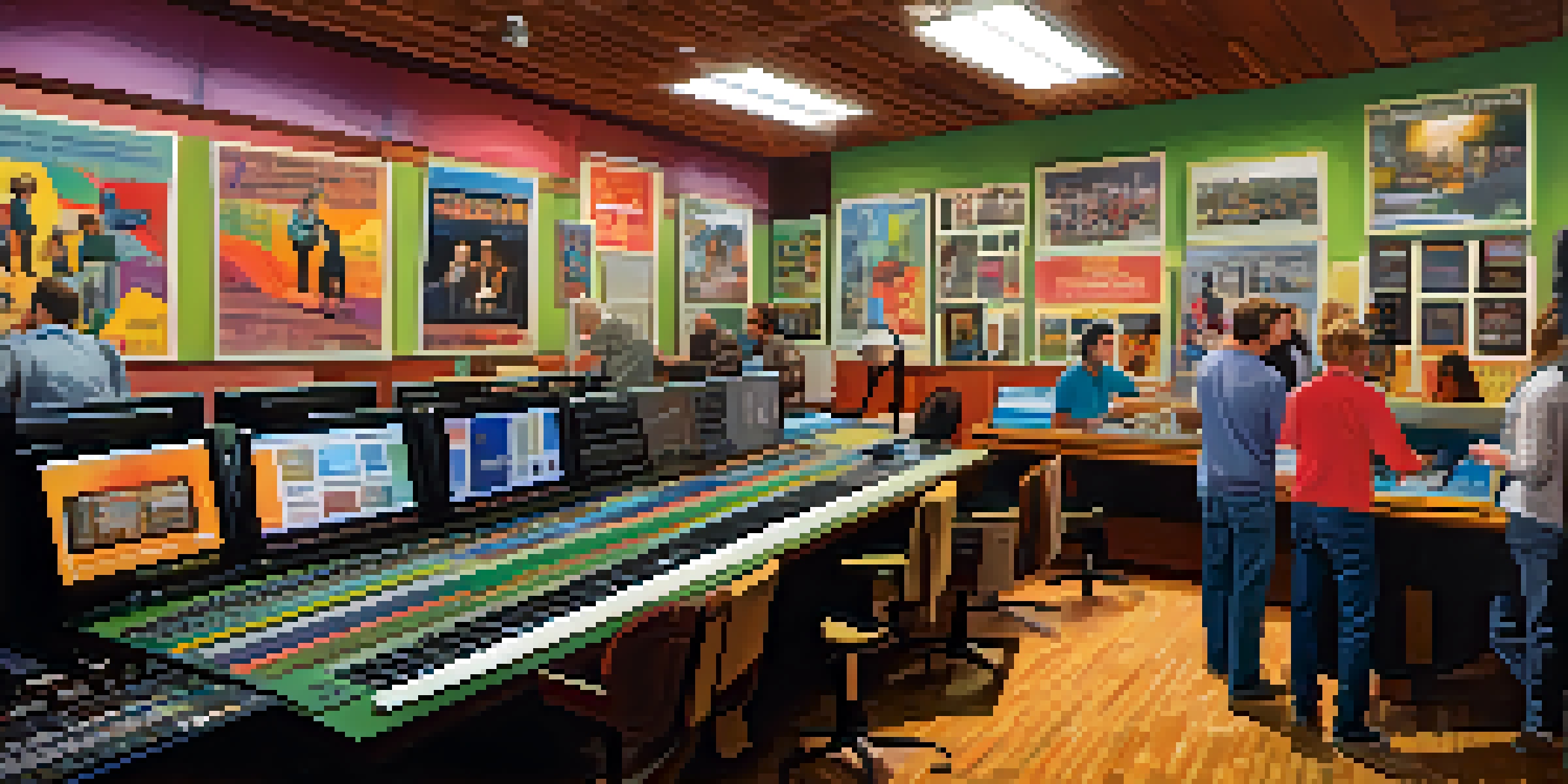Community Radio: Amplifying Local Music and Voices

What is Community Radio and Its Importance?
Community radio is a non-profit broadcasting service that is run by and for the community. Unlike commercial stations, its primary mission is to serve the local population rather than to generate profits. This unique focus enables it to amplify diverse voices and cultures often overlooked by mainstream media.
Community radio is about more than just music; it's about creating connections and building a sense of belonging among listeners.
These radio stations play a crucial role in promoting local music, artists, and events, creating an audio platform for community expression. When listeners tune in, they are not just hearing music; they are connecting with their neighbors and fostering a sense of belonging. This connection can be incredibly empowering, especially for underrepresented groups.
Furthermore, community radio stations often engage in discussions about local issues, helping to educate and inform the public. By providing a space for dialogue and creativity, these stations contribute significantly to building stronger, more resilient communities.
Showcasing Local Music: A Platform for Artists
One of the standout features of community radio is its dedication to local music. Independent artists often struggle to get airplay on larger stations, but community radio provides a welcoming platform for their work. This access can be life-changing for musicians, as it opens doors to new audiences and opportunities.

Many community radio stations host live performances, allowing artists to reach listeners in real-time. These events not only showcase local talent but also create a vibrant atmosphere where listeners can experience music in a communal setting. Imagine gathering with friends, sharing stories, and discovering the next big local band all in one evening!
Community Radio Empowers Locals
By amplifying diverse voices and promoting local culture, community radio fosters a strong sense of belonging and unity among residents.
Moreover, by featuring local music, community radio fosters a sense of pride in regional culture. It encourages listeners to support local artists, attend gigs, and participate in local music festivals, thereby strengthening the overall music scene.
Building Community Through Shared Experiences
Community radio is more than just a music platform; it’s a space where shared experiences are amplified. From discussing local news to promoting cultural events, these stations create a sense of unity among listeners. When people tune in, they are not just passive consumers; they become active participants in a shared community narrative.
The beauty of community radio is that it amplifies the voices of those who are often unheard, fostering a culture of inclusivity and diversity.
Listeners often feel a personal connection to the radio hosts and local artists, which fosters loyalty and engagement. This connection can be deeply enriching, as it encourages individuals to share their own stories and experiences, contributing to a more diverse and inclusive community dialogue.
In essence, community radio acts as a glue that binds people together, encouraging collaboration and interaction. It transforms the act of listening into a communal experience, reinforcing the idea that everyone has a voice worth hearing.
Engaging Youth and Future Generations
Community radio also plays a vital role in engaging youth and inspiring the next generation of creators. Many stations offer training programs, teaching young people about broadcasting, production, and music promotion. This hands-on experience can ignite a passion for media and arts, equipping them with valuable skills for the future.
Moreover, by involving youth in the programming and decision-making process, community radio empowers them to express their ideas and concerns. This creates a platform where younger voices are not just heard but celebrated, enriching the community with fresh perspectives.
Youth Engagement in Media Creation
Community radio stations actively involve youth through training programs, empowering them to express their ideas and contribute to their local music scene.
As these young individuals grow and develop their talents, they often continue to contribute to their local music scene. The cycle of mentorship and creativity flourishes, ensuring that the community remains dynamic and vibrant.
Fostering Inclusivity and Diversity
Community radio stations prioritize inclusivity and diversity, aiming to represent the voices of all community members. This commitment is essential in a world where mainstream media often fails to reflect the rich tapestry of local cultures. By broadcasting in multiple languages and featuring various genres of music, these stations ensure everyone feels welcome.
Diversity in programming not only enriches the listening experience but also fosters understanding and respect among different cultures. Listeners are introduced to new sounds and stories, broadening their horizons and building empathy within the community.
Ultimately, community radio serves as a powerful tool for social change, breaking down barriers and promoting acceptance. It encourages dialogue on important issues, helping to create a more inclusive society where everyone’s voice is valued.
The Role of Volunteers in Community Radio
Volunteers are the heart and soul of community radio stations, contributing their time and expertise to keep the station running. From on-air hosts to technical support, these individuals play a vital role in shaping the station’s identity and programming. Their passion for local music and community engagement is what makes these stations thrive.
Volunteering at a community radio station provides individuals with a unique opportunity to learn new skills, meet like-minded people, and contribute to a cause they care about. Many volunteers find a sense of fulfillment in being part of something bigger than themselves, as they help amplify local voices and stories.
Volunteers Drive Community Radio
The passion and dedication of volunteers are essential to the operation of community radio stations, enriching both the station's identity and the local community.
This collaborative spirit not only strengthens the station but also enriches the community. By working together, volunteers build lasting relationships and foster a sense of shared ownership over their local media landscape.
Challenges and Opportunities for Community Radio
While community radio brings many benefits, it also faces challenges such as funding and competition from digital platforms. Many stations rely on grants and donations to stay afloat, which can result in financial instability. However, these challenges also present opportunities for innovation and creativity in how stations engage their audiences.
For instance, community radio has begun to embrace online streaming and podcasting, allowing them to reach a wider audience beyond their local area. This shift not only increases accessibility but also opens new revenue streams through sponsorships and partnerships, ensuring they can continue to support local music and voices.

By adapting to the changing media landscape, community radio can remain a vital resource for local communities. Embracing new technologies and strategies ensures that these stations continue to thrive and evolve, amplifying the voices that matter most.